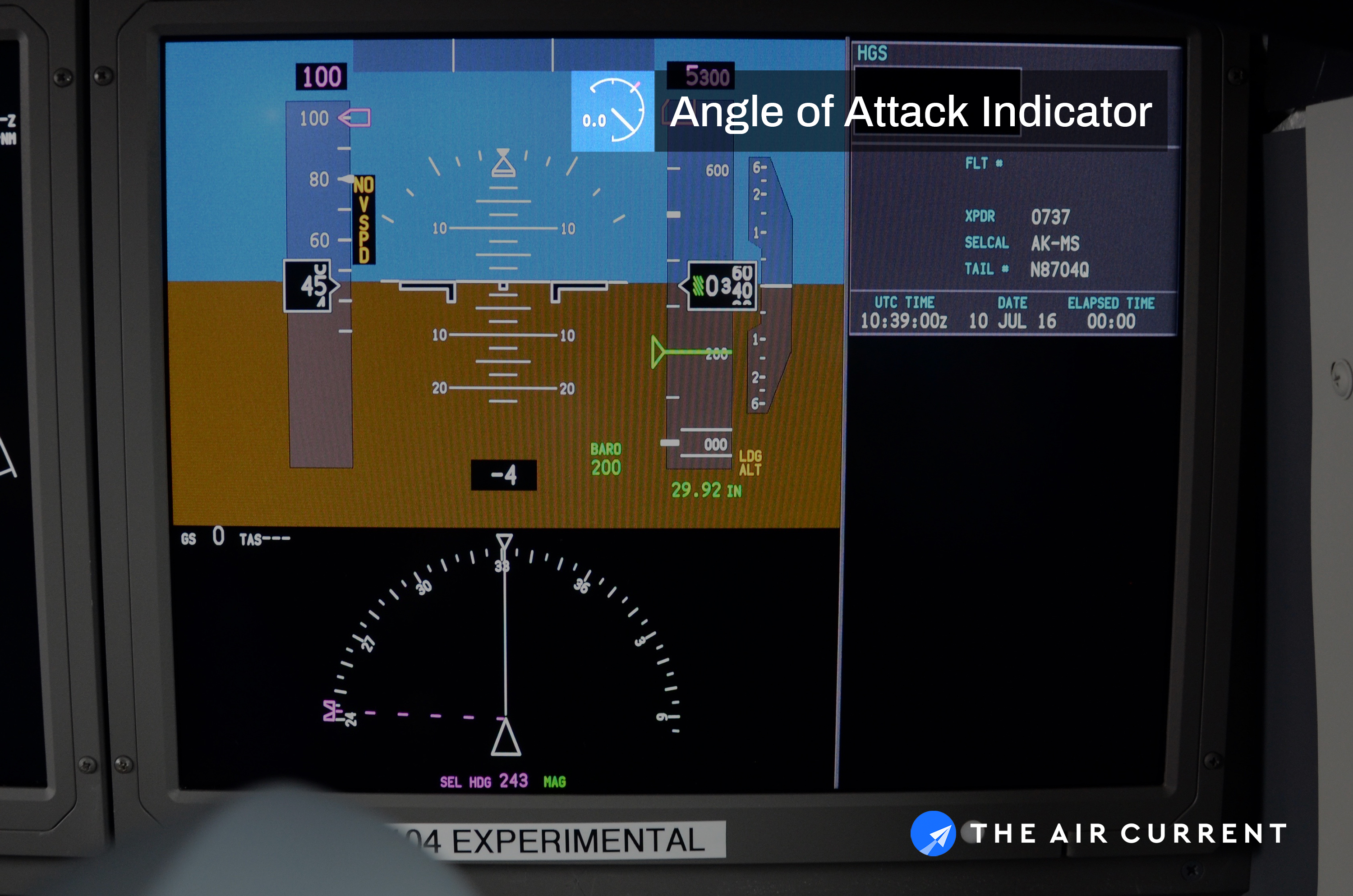Southwest Airlines will activate new Angle of Attack (AOA) indicators on the large display screens for its upcoming 737 Max deliveries from Boeing to guard against any erroneous sensor data that may activate the jet’s controversial stall protection system, according to the airline.
The cockpit display modification marks the first technical change to the airline’s 737 operations since the October 29 crash of Lion Air 610 off the coast of Jakarta, Indonesia that killed all 189 aboard the brand new 737 Max 8.
Southwest’s pilots, the largest group of trained 737 aviators on the planet, were notified this week of the upcoming change that will start rolling out with new deliveries from Boeing starting in late December, according to two people familiar with the deployment.
Related: What is the Boeing 737 Max Maneuvering Characteristics Augmentation System?
The new indications provide “continuous visual feedback to the Flight Crew allowing identification of erroneous AOA that could lead to un-commanded stabilizer trim actuation,” according to an internal message provided to the Southwest pilot corps.
Indonesian air safety investigators believe erroneous AOA data fed to the 737 Max’s flight computer caused the new jet’s Maneuvering Characteristics Augmentation System (MCAS) feature to activate, repeatedly trimming the jet’s horizontal stabilizer to push the nose down believing the aircraft was at risk of a stall. The automated system activated 26 times as the crew lost control, according to flight data recovered by investigators. Investigators are working to determine why the crew responded the way it did, when on earlier flights where a similar problem occurred and the crew deactivated the electrical trim system.
Southwest’s Implementation
“Currently, the MAX and NG have an AOA disagree light that provides an alert of erroneous AOA data,” a Southwest Airlines spokeswoman said in a brief statement confirming the upcoming change. “The AOA indicator will provide a valuable supplemental cross-check in the event there is an erroneous AOA signal present.”

Southwest is expected to additionally retrofit its existing Max fleet with the optional indicators as well.
Boeing did not immediately respond to a request for comment.
The AOA data is an integral part of the operation of the aircraft. The sensor data is used to activate the vibrating stick shaker for a tactile alert of an approaching stall, a red “barber pole” on the airspeed indicator for visual cues on stall margin and a pitch limit indicator that illustrates how high the nose of the jet can safely rise.
Currently the sole persistently shown AOA indication on Southwest’s 737 Max fleet is displayed on the Captain’s-side Heads-Up Display (HUD). The drop-down glass screen provides an expanded view of the 737’s display screens overlaid on the world outside, illustrating aircraft’s the attitude, speed, altitude and other visual cues including the jet’s direction of travel. About 80% of Southwest’s 737 fleet has HUDs, according to a senior airline captain. The optional AOA indicators are not activated on the airline’s Next Generation 737 fleet.
An American Airlines spokesman said AOA indicators on the primary flight displays have been a feature on its Next Generation 737 fleet since the late 1990s and are featured on its 737 Max aircraft as well.
Related: Boeing issues 737 Max fleet bulletin on AoA warning after Lion Air crash
Lion Air’s 737 Max aircraft, similar to many low-cost airlines, do not have those same heads-up displays installed on its 737 fleet and most 737 Max operators do not have the added AOA indicators on the heads-down flight displays today. According to photos and video footage reviewed by The Air Current, the Lion Air Max fleet does not have the visual AOA indicators installed on its primary flight displays. Additionally, Lion Air did not have the same AOA DISAGREE light that are on Southwest’s aircraft, according to a report from Reuters.
Subscribe to TACSubscribe to Continue Reading
Our award-winning aerospace reporting combines the highest standards of journalism with the level of technical detail and rigor expected by a sophisticated industry audience.
- Exclusive reporting and analysis on the strategy and technology of flying
- Full access to our archive of industry intelligence
- We respect your time; everything we publish earns your attention

